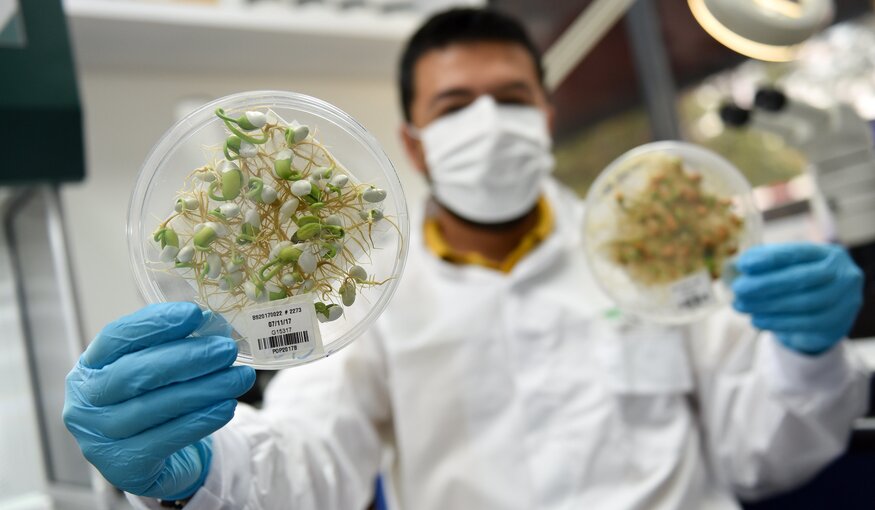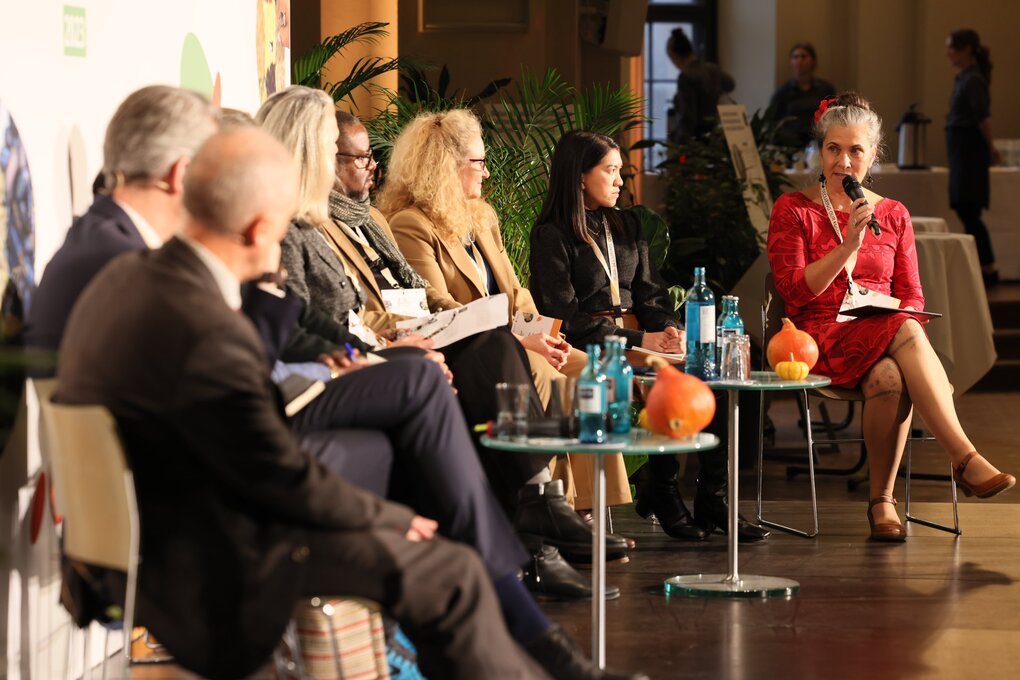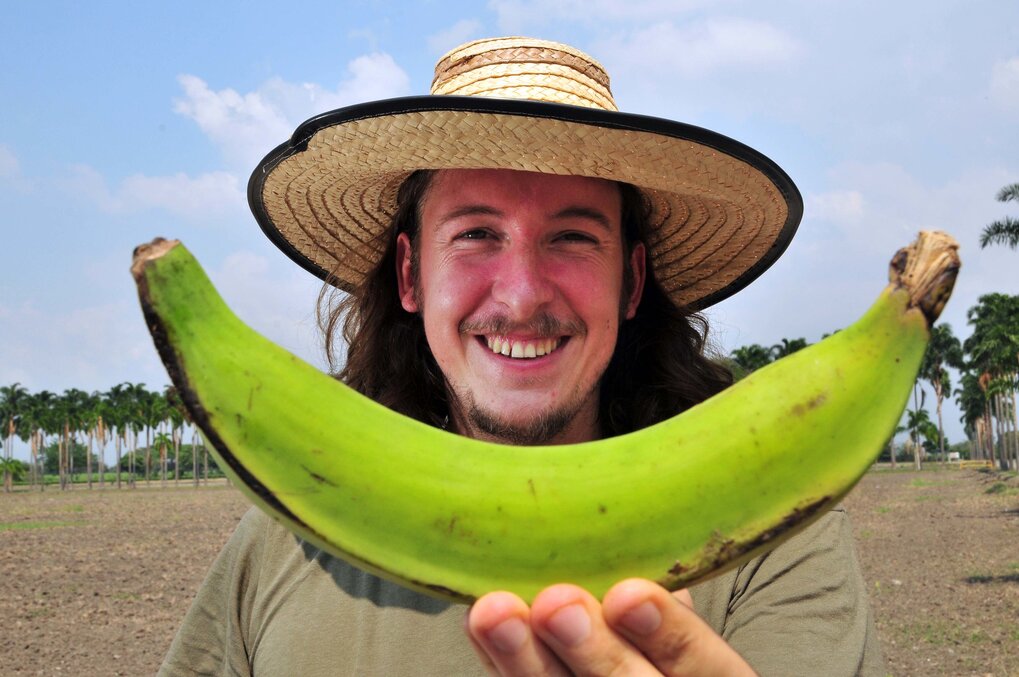Looking at Genebanks Through a Breakthrough Lens

17 July 2024
With momentum growing for transforming our food systems, the United Kingdom and the Crop Trust are bringing voices together to discuss how to support genebanks and cement their role as critical for sustainability.
Over the last couple weeks, the Crop Trust hosted two virtual roundtables in support of the United Kingdom’s Breakthrough Agenda, a global framework to strengthen international cooperation to make sustainable solutions the most affordable, accessible, and attractive option in key sectors. Our sessions showcased crop diversity as critical to agricultural sustainability and prompted thoughtful discussion on how to raise its political status to meet urgent needs for funding and support.

Karen Mapusua shares insights from her work in the Pacific with the audience of the Global Crop Diversity Summit hosted in Berlin in 2023. Photo: Crop Trust/MIKA-fotografie
The first session, Biodiversity and Climate Funding Sources for Crop Diversity, was joined by Geoffrey Hawtin, Executive Board Member of the Crop Trust, and one of the 2024 World Food Prize Laureates, and by Karen Mapusua, Director of the Land Resources Division of The Pacific Community (SPC). Both speakers emphasized crop diversity’s fundamental role in supporting our food systems, pointing out how genebanks are engines of adaptation rather than static museums.
The entire aim of the system, as Hawtin identified, “is not to build international genebanks in isolation. The whole idea of this system is to reach the farmer and, in particular, the small-scale farmer.”
In discussing how best to raise the political status of crop diversity and secure funding through climate pathways, Mapusua emphasized the need to integrate crop diversity into national adaptation plans (NAPs) and national biodiversity strategies and action plans (NBSAPs). Linking national agricultural security and performance is increasingly important in securing funding as traditional ODA budgets face increasing demands and governments across the world are being asked to prioritize activities which demonstrate domestic benefits.
The second session, Non-ODA/Research Funding Sources for Crop Diversity, explored alternative funding methods for crop diversity conservation and outlined the costs of missing funding.
Andy Jarvis, Director of Future of Food at the Bezos Earth Fund, laid it out plainly. “If you underfund genebanks, you lose samples,” Jarvis stressed.

Andy Jarvis during his time at CIAT. Photo: Neil Palmer/CIAT
In his time as the Associate Director of Research and Innovation at the Alliance of Bioversity International and CIAT, a cassava disease broke out in Southern Ecuador. CIAT’s entire collection of over 13,000 varieties of cassava were screened for resistance and only a single one showed resistance to the new disease, emphasizing the need to fully fund genebanks and strive towards never losing a single accession.
Anna Backhaus, Cereals Prebreeder at ICARDA, confirmed this fact, noting that breeders have, in the past, found ways to utilize germplasm previously thought unbreedable, for example in Durum wheat. Jarvis, referencing the USD 440,000 contribution by the Bezos Earth Fund to the Crop Trust’s Endowment Fund, reminded the audience of the need for research bodies to support the genebanks that enable their work and encouraged further exploration of funding in this space.
Both sessions highlighted the vital role of crop diversity in ensuring that our food system can successfully navigate current and future challenges and the importance of greater collaboration and support between policymakers, genebanks, and donors in realizing this goal.
Categories: For Partners, For Policymakers
